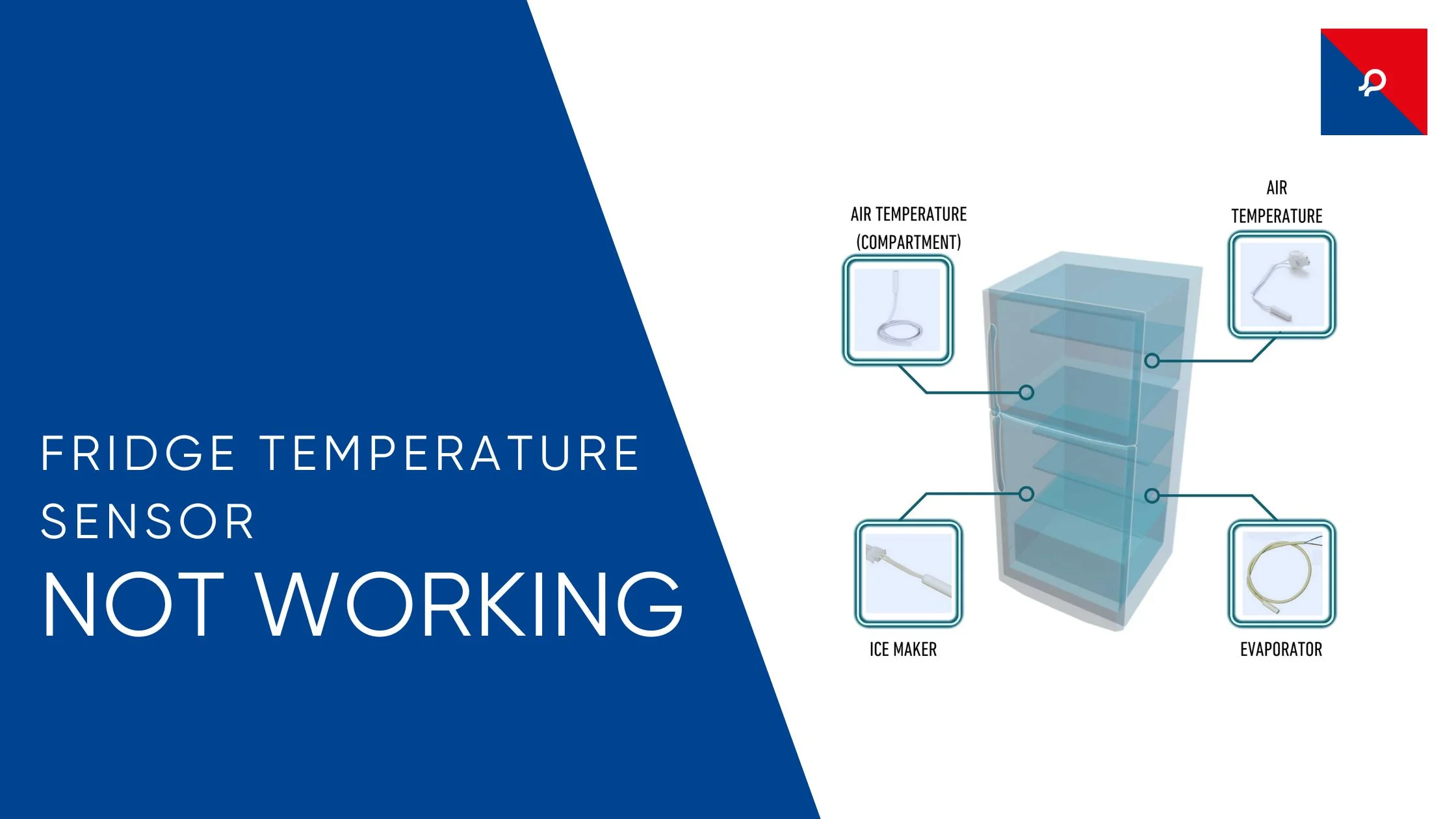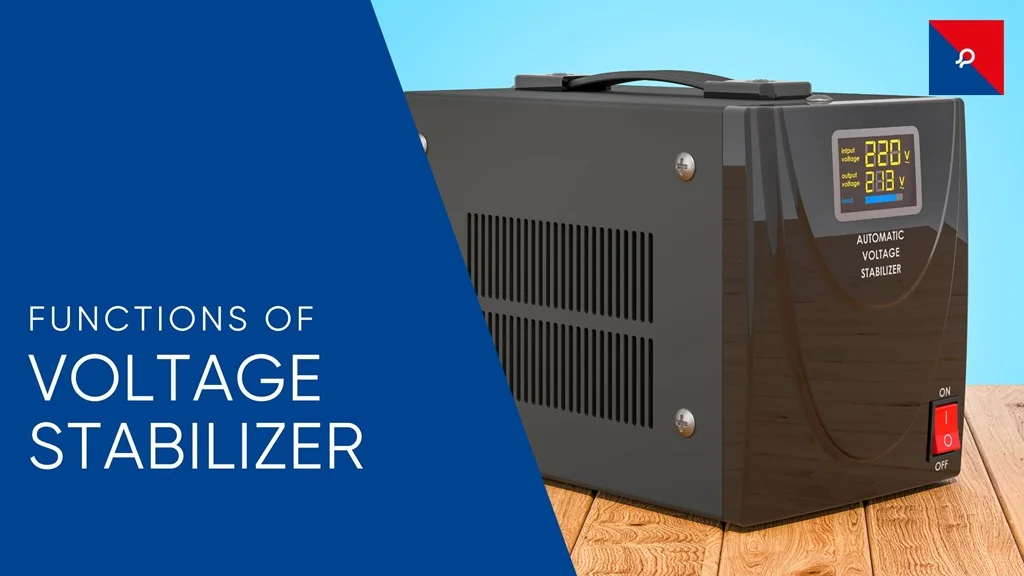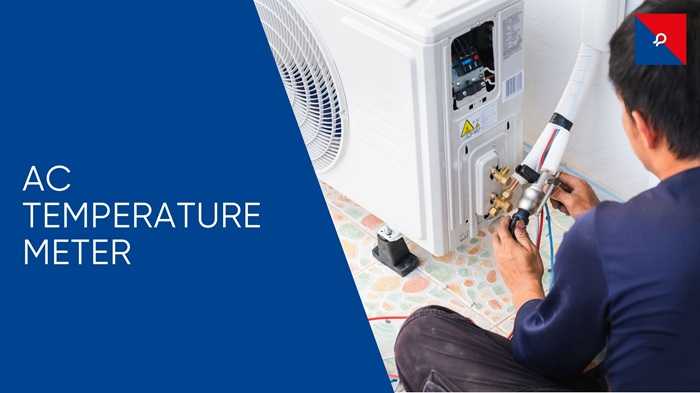
Let us think about this: You reach out for a cold drink from the fridge, only to feel some warm air greeted back! Your milk is on the verge of turning into cheese, while your veggies seem to have seen better days. If this seems familiar, it might be that your fridge temperature sensor is not working.
The temperature sensor in the fridge is a tiny yet powerful device that measures the temperature inside the fridge and turns on the cooling or stops it. If it fails, the inside of the fridge can become warm and turn into a very expensive pantry, or too cold, which invariably turns your lettuce into an ice cube. But don't panic; before you go out to get another fridge, let us classify the problem and see how you can fix it.
How Does a Fridge Temperature Sensor Work?
The fridge temperature sensor is like the brain of your refrigerator cooling system. It continuously controls and checks for temperature inside and provides the signal to the control board. If the information is that cooling is required, the fridge will turn on the compressor to chill things down; if it requires defrosting, it will turn off the compressor to maintain the right temperature.
Once the temperature sensor fails, it will not provide any more accurate readings. In these cases, it can lead to:
- Your fridge being too warm and causing your food to spoil.
- Your fridge being too cold and freezing every item inside.
- The fridge will turn on and off all the time, resulting in a huge electricity bill.
How to Know If Your Fridge Temperature Sensor Is Not Working?
Whether it has to do with the cooling mechanism, many fridge problems can be caused by a faulty temperature sensor. It is generally agreed that some symptoms indicate the failure of the sensor:
- Inconsistent Cooling: For example, one day the fridge feels warm, and the next day it feels like an Arctic tundra. If food melts in one part of the fridge while it’s freezing in another part, there could be an indication of bad sensors.
- Food Spoiling Too Quickly: If your groceries are being spoiled some days before the date, then that means the refrigerator is not working well as a cooler.
- Fridge Keeps Running Continuously: A damaged sensor may signal its interior to be warm constantly, driving increased compressor activity and energy usage.
- Error Codes on Display: Many refrigerators nowadays will display an error code when the temperature sensor goes wrong. Check your fridge manual for decoding error messages.
- Won't Work When Adjusting Temperature: When it comes to engaging with the control board, your sensor may be dead; this could be why your fiddling with the temperature dial shows no effect.
If your fridge is manifesting any of the aforementioned symptoms, now may be an appropriate time to run a sensor test.
How to Test a Fridge Temperature Sensor?
Now that we tend to suspect that the fridge temperature sensor is not working, let us find out for sure. Testing it isn't as complicated as it sounds: you don't need an engineering degree. It needs a few basic tools and a little patience.
Step 1: Unplug the Fridge
Safety first! You must unplug your refrigerator from the electrical outlet before starting your work. Our purpose is to discover the root cause of the issue instead of seeking an electrifying incident.
Step 2: Locate the Temperature Sensor
The temperature sensor resides within the refrigerator next to the evaporator coils at a position that requires access by removing the back panel. The temperature sensor exists either within the air duct channels or is joined to the fridge control board according to certain models. You can find instructions about your fridge temperature sensor placement in the device’s manual.
Step 3: Remove the Sensor
Remove the sensor from its housing with diligence after localizing it. The sensor depends on wires that extend from the control board for operation. Handle all components gently when fixing this one component, because you need to avoid breaking any other parts.
Step 4: Check for Visible Damage
A careful investigation of the sensor must take place before performing the testing procedure. Physical damage, together with corrosion, along with frayed wires, suggests the problem is already identified. Replacement of the sensor becomes necessary when it sustains damage.
Step 5: Test the Sensor with a Multimeter
Electrical resistance measurement functions as the main capability of a multimeter tool. Here’s how to use it:
- To operate a multimeter you need to select its resistance (ohms) measurement mode.
- Place the sensor directly into an ice water cup which contains water at 0°C temperature or 32°F.
- Join the multimeter probes to the two terminals located on the sensor.
- The operation of the sensor requires its resistance to alter according to temperature variations.
- For proper functionality, the sensor must demonstrate changing resistance readings when the temperature changes, yet if it shows a static reading or remains at a single value, the sensor should be considered defective.
Step 6: Compare the Readings with Manufacturer Specifications
The sensor resistance values of different fridge models differ from each other. You can find your sensor reading expectation by consulting either the user manual or the manufacturer’s online resources for your appliance. A new sensor must be purchased when your readings from the check do not line up with the manufacturer's specifications.
Replacing a Faulty Fridge Temperature Sensor
The correct solution for a non-functioning fridge temperature sensor requires a complete replacement. The replacement process turns out to be simple for this repair.
- Before replacement, purchase a compatible sensor through appliance parts stores and internet retailers by verifying the model number of your fridge.
- Begin by disconnecting the insufficient sensor provided you have not started with this preliminary step.
- Add the new sensor by wiring it correctly to the wires until it is securely connected.
- Permanently attach all components before you close the back panel of the fridge.
- Test the fridge temperature after plugging it in for a few hours while monitoring its performance. The solution indicates proper sensor installation when everything inside the appliance cools down evenly.
JR Sensors For Your Fridge
JR Sensors is the leading manufacturer that offers reliable temperature sensing solutions that play an important role in ensuring the proper jurisdiction of appliances such as refrigerators. When the fridge temperature sensor fails, it causes improper cooling and leads to spoilage of food. Advanced temperature sensors from JR sensors ensure precise readings along with durable and efficient performance. Avoid typical temperature control issues with reliable operation by using these high-quality sensors.
Final Thoughts
The failure of your fridge temperature sensor will convert your refrigerator into a destructive food storage area. You can identify and resolve the issue when you have patience and basic hardware skills.
Electrician services should be contacted immediately when you feel unsure about working with electrical apparatuses. Using your multimeter will solve your issues as you protect your food and money from spoiling.
Frequently Asked Questions
1. How do I know if my fridge temperature sensor is not working?
2. How to test a fridge temperature sensor?
3. Can a faulty temperature sensor cause a fridge to stop cooling?
4. Where is the temperature sensor located in a fridge?
5. Can I replace the fridge temperature sensor myself?

Voltage Stabilizer Function: Why It’s Essential for Appliance Safety
Understand how a voltage stabilizer protects appliances from power fluctuations, prevents electrical damage, and ensures long-lasting performance. Discover its key functions and why it’s vital for every home and business.

